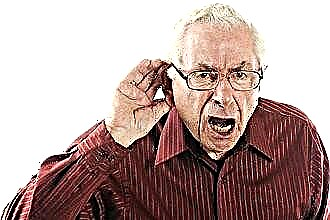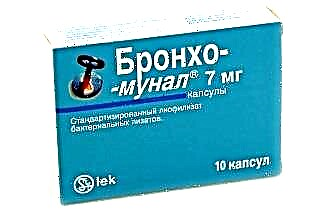Children from 2 to 6 years old are at risk for many diseases of an infectious and inflammatory nature. This is due to both insufficient immunity, which continues to form at this age, and the anatomical features of the structure of the child's body. In addition, by the age of two, the immunity transmitted from the mother weakens, there is no breastfeeding, and, therefore, the intake of nutrients with this irreplaceable product is excluded.
It is at this age that the highest incidence of childhood infectious diseases, respiratory infections is noted. One of the most common complications is ear inflammation.
Causes of ear pain

The main reason for the development of this complication is the anatomical features of the child's body. In a child, the auditory tube, which connects the middle ear cavity with the nasopharynx, is much shorter than in adults, which contributes to the throwing of pathogenic microorganisms into the middle ear cavity. Any disease that occurs with a runny nose, swelling of the mucous membrane of the auditory tube can lead to the development of inflammation in the middle ear, that is, otitis media is a complication of diseases such as
- SARS, including influenza;
- sinusitis;
- scarlet fever;
- measles.
Enlarged adenoids are a predisposing factor for the development of ear inflammation in children.
The role of these formations in the development of otitis media is due to the fact that they squeeze the auditory tube from the outside, causing its narrowing and the development of stagnant phenomena that provoke the development of inflammatory processes.
In the presence of characteristic signs of childhood infections, pathognomonic rash, the appearance of an additional symptom in the form of pain in the ear indicates the development of complications of these diseases. In this case, in addition to the appointment of an infectious disease specialist, correction of treatment by an otolaryngologist should be carried out.
 Other reasons when a child complains of pain in the ear and parotid region may be the following pathological conditions:
Other reasons when a child complains of pain in the ear and parotid region may be the following pathological conditions:
- lymphadenitis;
- trigeminal neuralgia;
- parotitis;
- traumatic injury;
- a bite of an insect;
- oncological diseases.
In this situation, it is very important to determine whether the cause of this condition is directly the ear, or the pathological process proceeds with a healthy organ of hearing. Correct treatment can only be prescribed directly by a specialist dealing with this pathology. At the same time, ear problems; the otolaryngologist is engaged, neuralgia belongs to nervous diseases, mumps should be treated by an infectious disease specialist, etc.
Otitis media
Inflammation is another common cause of ear pain in a child. The main symptom of this disease is acute pain in the ear in a child. Children complain of shooting, boring pain, tinnitus. Acute ear pain in a 6-year-old child can be of such intensity that children cry, scream, and cannot find a place for themselves. With the spread of the process, dizziness, nausea, vomiting, and impaired coordination may occur.
More often, a unilateral lesion is observed, although there is often pain in the ears of the child on both sides. The presence of inflammatory changes in the tympanic cavity leads to a deterioration in the conduction of sound from the tympanic septum to the auditory nerve. As a result, there is a decrease in hearing from the affected side, sometimes to its complete absence. In the case of a unilateral lesion, this symptom is hardly noticeable. However, with a bilateral process, hearing loss is a very pronounced symptom of otitis media.
The typical course of otitis media is characterized by increased body temperature.
 Usually its indicators are 38-39 degrees. However, at present, the current trend in the development of otitis media is a purulent sluggish course, characterized by less pronounced clinical signs.
Usually its indicators are 38-39 degrees. However, at present, the current trend in the development of otitis media is a purulent sluggish course, characterized by less pronounced clinical signs.
A sharp pain in the child's ear in this case is replaced by heaviness or dull pain. Temperature readings can also be significantly reduced. In some cases, the disease proceeds even at normal temperatures. However, this is not evidence of a mild course of the disease. Such a course of exudative otitis media is less treatable, prone to the development of complications, including persistent hearing loss due to purulent fusion of the bones of the tympanic cavity.
The main treatment for purulent otitis media is antibiotic therapy.
It is proposed to use antibacterial agents, both in the form of ear drops and drugs of systemic action. The course of treatment should be at least 7-10 days. The duration of antibiotic use should be agreed with the otolaryngologist and depend on the results of otoscopy. Sowing flora for sensitivity can be of great help in choosing effective antibacterial drugs.
It is also necessary to carry out measures to help restore the patency of the auditory tube.
For this, vasoconstrictive nasal drops are used, ear blowing, catheterization of the auditory tube, pneumomassage of the tympanic membrane can be applied.
The need for all these activities depends on the clinical manifestations, the form of otitis media, the results of otoscopy. The techniques that are preferred for some clinical manifestations can be dangerous if other symptoms are present. The choice of therapeutic tactics belongs to the otolaryngologist, who in his prescriptions relies not only on complaints, objective manifestations, but also on the results of instrumental examination.
Otitis externa
External ear inflammation in a child is also accompanied by pain. In this case, the child's condition usually suffers slightly. Signs of anxiety, irritability may be absent. The disease is characterized by normal body temperature. Less often, its increase to subfebrile numbers is noted /
Typical symptoms of external ear inflammation are swelling and redness.
 In the event that the resulting infiltrate is significant in size and is located in the lumen of the external auditory canal, hearing loss may occur. It is due in this case to the difficulty of sound conduction. Opening the abscess will lead to rapid hearing recovery. The main means of treatment in this case can be ointments and ear drops with an antibacterial effect, antiseptics for external use.
In the event that the resulting infiltrate is significant in size and is located in the lumen of the external auditory canal, hearing loss may occur. It is due in this case to the difficulty of sound conduction. Opening the abscess will lead to rapid hearing recovery. The main means of treatment in this case can be ointments and ear drops with an antibacterial effect, antiseptics for external use.
Injury
Ear pain in a child, especially of preschool age, can also be caused by a traumatic ear injury (picking with sharp objects, pushing foreign bodies into the external auditory canal). The consequence of such exposure may be injury to the skin or even the eardrum. The first complaint in this case is that the child has ear pain without fever.
In case of an injury, a bloody or rusty exudate may appear in the ear. In the future, there is a risk of infection and the development of otitis externa. Perforation of the tympanic membrane, in addition to sharp pain, will lead to ear congestion and hearing loss. The patient needs urgent consultation with a specialist, since it is possible to assess the degree of traumatic injury only using instrumental diagnostics. With regard to therapeutic measures for ear injury, it all depends on the degree and area of the lesion, as well as the integrity of the eardrum.
Infectious parotitis
In some cases, patients may complain of pain in the ear when it is completely healthy. This happens when pain radiates from the oral cavity, parotid and submandibular regions. For example, complaints that a child has ear pain are typical enough in case of mumps, or mumps. At the same time, patients notice an increase in pain when chewing. Since mumps is a disease of a viral nature, the following symptoms are typical for it - aches in muscles, joints, severe malaise, weakness. One of the early symptoms of the disease is pain when pressing on the area behind the earlobe.
For differential diagnosis of ear pain, it is important to conduct an objective examination of the patient. The presence of additional signs can help clarify the diagnosis.

For infectious parotitis, the pathognomonic symptom is an increase and soreness of the salivary glands, as a result of which there is a thickening of the parotid region and neck. The face becomes pear-shaped.
Due to objective data, the diagnosis of this condition is usually straightforward. It also facilitates the epidemiological history. Since the disease is very contagious, the incidence in the children's team can increase dramatically.
Lymphadenitis
Various formations in the parotid region can mask ear pain. Most often, with severe pain, lymphadenitis occurs, that is, a disease characterized by inflammation of the lymph nodes. Moreover, if the lymph node is located in the parotid region, the child has a pain behind the ear. The disease can develop slowly without causing any discomfort. Due to a decrease in immunity, the development of infectious diseases, the lymph node can increase in size and become painful. Quite often, such a process regresses on its own. In some cases, antibiotics are used. To clarify the nature of this formation, a consultation with a surgeon is shown. Diagnosis can be facilitated by a general blood test and ultrasound of the lymph nodes.
A tumor-like formation in the parotid region can be atheroma, cyst. Characterized by slow growth, under certain conditions they can become infected, which is manifested by the development of pain syndrome, the presence of hyperemia of the pathological focus, and a local increase in temperature. To clarify the diagnosis, a biopsy is possible. In case of suppuration of these formations or in the presence of rapid growth, their removal by surgery is indicated.
Under the guise of ear pain, diseases of the child's oral cavity can also occur.
Carious teeth, stomatitis are also a common reason that a child's ear hurts. In this case, the anatomical proximity to the organ of hearing leads to the irradiation of pain. Moreover, if only a specialist can reliably determine a tooth disease, then the presence of pathological foci on the oral mucosa and gums is obvious when examining them.
Thus, if a child has ear pain, most often it can be ear inflammation due to complications of ARVI, ENT pathology or childhood infections. To prescribe the correct treatment, an immediate consultation with an otolaryngologist is indicated.
If an objective examination of the patient reveals the presence of a mass in the parotid region, an increase in the salivary glands, or pathological foci on the oral mucosa, then other specialists, an infectious disease specialist, a dentist, a surgeon may need to consult.



